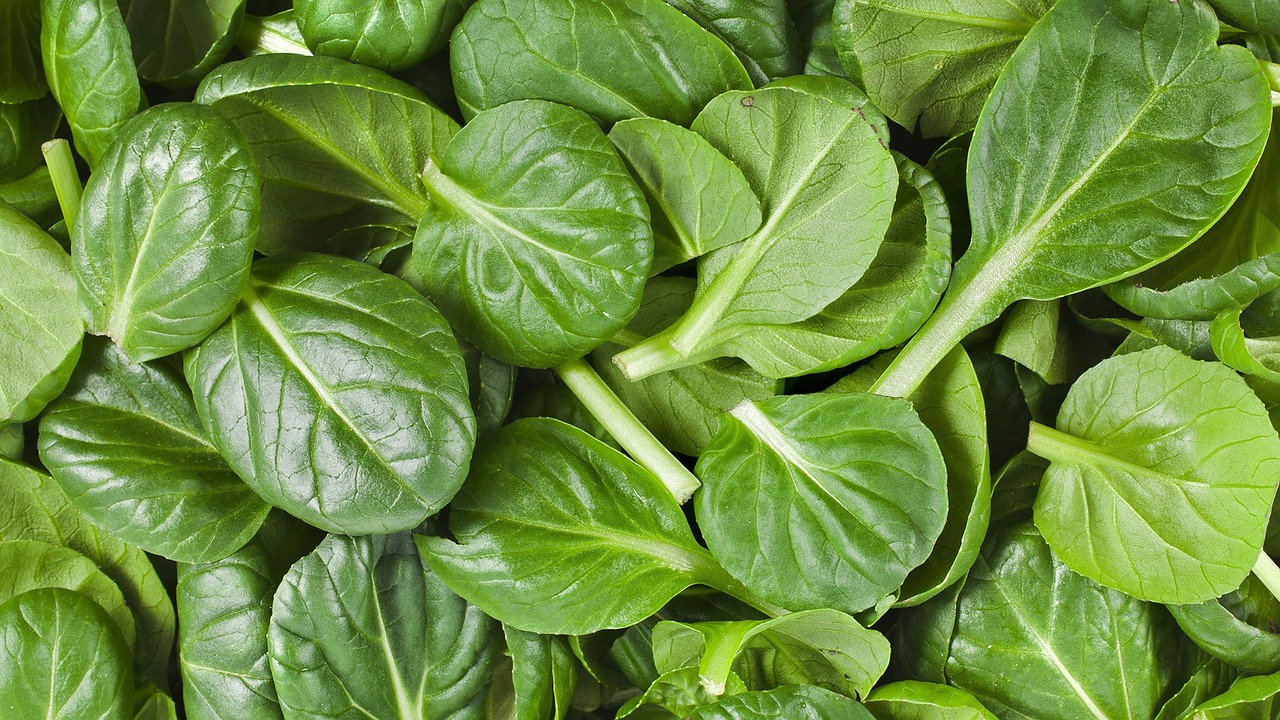Choose Good Spinach – Spinach is a versatile and nutrient-rich leafy green, packed with vitamins and minerals that offer numerous health benefits.
Whether you’re preparing a salad, smoothie, or cooked dish, selecting the best quality spinach ensures you get the most nutrition and flavor.
Read also:
a. 7 Healthy Recipes for People with Diabetes
b. 10 Reasons to Avoid Fried Foods for Your Health
Why We Consume Spinach
Consuming spinach regularly offers numerous health benefits due to its rich nutrient profile. It is an excellent source of vitamins like A, C, K, and folate, which support immune function, skin health, and proper cell growth.
The high levels of antioxidants, such as lutein and beta-carotene, help protect the body from oxidative stress and reduce the risk of chronic diseases like heart disease and cancer.
Spinach is also packed with essential minerals like iron, calcium, and magnesium, contributing to better bone health, muscle function, and the prevention of anemia. Its fiber content aids in digestion, helps regulate blood sugar levels, and supports a healthy weight – Choose Good Spinach.
read also: Reasons to Avoid Fried Foods for Your Health
Beyond its nutritional value, spinach is incredibly versatile and easy to incorporate into various meals. Whether eaten raw in salads, blended into smoothies, or cooked in soups and stews, spinach adds flavor and texture while providing a nutrient boost.
Its low calorie and high water content make it a great choice for those looking to maintain a healthy diet without adding excess calories.
Consuming spinach regularly can also support cardiovascular health, as its potassium content helps regulate blood pressure, while its anti-inflammatory properties promote overall well-being (Choose Good Spinach).
Key Nutritional Content Found in Spinach
Spinach is a nutrient-dense leafy green vegetable that offers a wide range of health benefits. Here is an overview of the spinach:
1. Vitamins
- Vitamin K: Spinach is an excellent source of vitamin K, which plays a vital role in blood clotting and bone health.
- Vitamin A: Spinach provides a significant amount of vitamin A, especially in the form of beta-carotene, which is essential for vision and immune function.
- Vitamin C: This vitamin acts as an antioxidant, supports the immune system, and helps in the absorption of iron.
- Folate (Vitamin B9): Important for DNA synthesis and cell division, folate is crucial, particularly for pregnant women to support fetal development.
- Vitamin E: Spinach contains a good amount of vitamin E, which acts as a powerful antioxidant, protecting cells from damage.
2. Minerals
- Iron: Spinach is a good plant-based source of iron, which is important for carrying oxygen in the blood and preventing anemia.
- Calcium: It provides a decent amount of calcium, which is vital for bone health and muscle function.
- Magnesium: Spinach is rich in magnesium, which helps with muscle function, nerve transmission, and energy production.
- Potassium: This mineral helps maintain proper heart function and regulates blood pressure.
3. Fiber
- Spinach is a great source of dietary fiber, which promotes digestive health, aids in weight management, and helps regulate blood sugar levels – Choose Good Spinach.
4. Antioxidants
- Spinach contains various antioxidants, such as lutein, zeaxanthin, and quercetin, which help protect the body from oxidative stress and may promote eye health and reduce the risk of chronic diseases.
5. Protein
- While not as high as animal sources, spinach contains a small amount of plant-based protein, contributing to muscle repair and growth.
6. Low in Calories
- Spinach is very low in calories, making it an ideal food for weight management and a healthy diet.
Overall, spinach is a low-calorie, high-nutrient vegetable that provides a wide range of vitamins, minerals, and antioxidants essential for overall health.

This guide will walk you through the essential tips on
How to choose good spinach for consumption and how to store it properly for maximum freshness.
1. Check the Appearance
- Look for Fresh, Crisp Leaves: Fresh spinach leaves should be vibrant green in color and crisp to the touch. Avoid spinach that looks wilted, yellow, or discolored, as this indicates that the spinach is past its prime.
- Avoid Slimy or Wet Leaves: Spinach that feels slimy or has wet spots is likely to be spoiled or beginning to rot. Always choose spinach that is dry and firm.
Pro Tip: If buying pre-packaged spinach, check the “best before” date and examine the contents through the bag or container for any signs of wilting or excess moisture – Choose Good Spinach.
2. Inspect for Damage or Pests
- Look for Holes or Tears: Spinach leaves that have holes, tears, or ragged edges may have been damaged by pests or mishandling. Choose leaves that are intact and smooth for the best texture and quality.
- Check for Signs of Pests: Occasionally, spinach may have small bugs or pests hiding in the leaves, especially in organically grown varieties. Gently separate the leaves to check for any unwanted visitors before purchasing.
Pro Tip: Washing spinach thoroughly at home is always recommended, even if it’s labeled as pre-washed.
3. Smell the Spinach
- Fresh, Earthy Aroma: Spinach should have a fresh, mild, earthy scent. If you notice any off-putting or sour smells, the spinach may be beginning to spoil.
- Avoid Foul Odors: A musty or rotten odor is a clear sign that the spinach is no longer safe to eat. Fresh spinach will have a pleasant, natural aroma.
4. Choose the Right Type of Spinach
There are several types of spinach available in stores, and choosing the right type depends on your culinary needs:
- Baby Spinach: These tender, small leaves are perfect for salads, sandwiches, and smoothies. Baby spinach is sweeter and more delicate than mature spinach, making it ideal for raw consumption.
- Savoy Spinach: This type has crinkly, curly leaves and is heartier in texture. It’s excellent for cooking, as it holds up well in sautés, soups, and stews.
- Flat-Leaf Spinach (Smooth-Leaf): With flat, smooth leaves, this spinach variety is easy to clean and often used in processed or frozen spinach products. It’s versatile for both raw and cooked dishes – Choose Good Spinach.
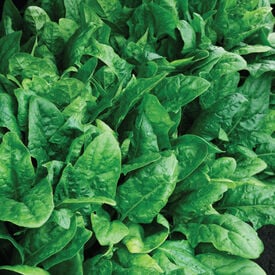
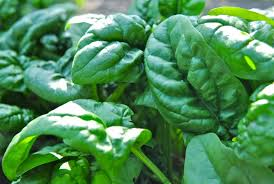
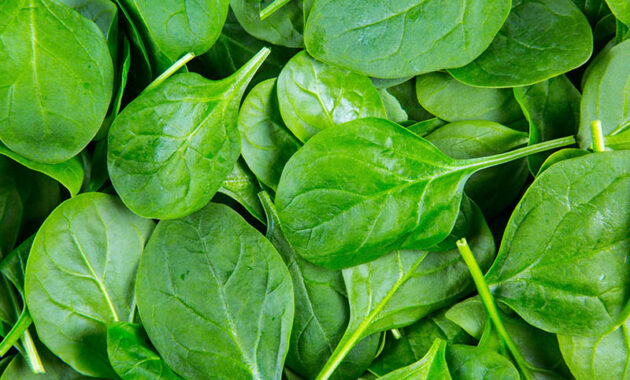
Pro Tip: For a quick salad or smoothie, baby spinach is a convenient option. For cooked dishes, such as quiches or stir-fries, flat-leaf or savoy spinach offers more texture and flavor.
5. Consider Organic vs. Conventional
- Organic Spinach: If you’re concerned about pesticide exposure, organic spinach is a great option. Spinach is often listed as one of the top vegetables with pesticide residue (according to the Environmental Working Group), so organic varieties might offer a safer choice.
- Conventional Spinach: Non-organic spinach is still nutritious but may have been treated with pesticides. Be sure to wash it thoroughly before consumption to remove any potential residues.
Pro Tip: If organic spinach is outside your budget, soaking conventional spinach in a vinegar-water solution can help remove pesticide residues – Choose Good Spinach.
6. Check the Stems
- Look for Firm, Sturdy Stems: Fresh spinach stems should be firm and slightly crunchy. If the stems feel soft, limp, or slimy, it’s a sign the spinach is past its prime.
- Avoid Thick, Woody Stems: Some mature spinach may have thick, tough stems that are less pleasant to eat. If you prefer a more tender texture, opt for younger spinach with thinner stems, like baby spinach.
7. Buy in Season
- Best Season for Spinach: Spinach is generally in season during the spring and fall, when it’s at its freshest and most flavorful. Buying in season also often means better prices and higher quality.
Pro Tip: During the off-season, frozen spinach can be a great alternative. It’s usually flash-frozen right after harvesting, preserving most of its nutrients and flavor – Choose Good Spinach.
8. Buy Loose Spinach Over Pre-Packaged
- Why Loose Spinach is Better: When possible, buy loose spinach from the produce section instead of pre-packaged varieties. This allows you to inspect the leaves more closely and select only the freshest bunches.
- Avoid Pre-Packaged if It Looks Wet: Pre-packaged spinach often traps moisture, leading to quicker spoilage. If you do opt for pre-packaged spinach, choose one that looks dry and check the expiration date carefully.
9. Proper Storage
- Refrigerate Immediately: Once you’ve purchased your spinach, store it in the refrigerator in an airtight container or plastic bag. Spinach is highly perishable and will stay fresh for about 3-5 days when properly stored.
- Wrap in Paper Towels: To extend the life of spinach, place a paper towel inside the container or bag to absorb excess moisture, which can cause the leaves to rot quickly.
- Freeze for Longer Storage: If you won’t be able to use your spinach before it spoils, consider freezing it. Blanch the leaves in boiling water for a minute, then transfer them to an ice bath. Drain, pat dry, and freeze in airtight bags.
Pro Tip: Use frozen spinach in cooked dishes like soups, casseroles, and sauces. It’s a great way to prevent waste and enjoy spinach year-round – Choose Good Spinach.
10. Wash Just Before Use
- Don’t Wash Spinach Too Early: Washing spinach before storing it can cause excess moisture to cling to the leaves, leading to faster spoilage. Instead, wash spinach just before you’re ready to use it – Choose Good Spinach.
- How to Wash Spinach: Rinse the spinach leaves under cold running water, rubbing gently to remove dirt or debris. For extra cleaning, soak the spinach in a bowl of water with a splash of vinegar, then rinse again.
Pro Tip: Use a salad spinner to thoroughly dry spinach leaves before using them in salads or other raw dishes. Wet spinach can dilute dressings and make salads soggy – Choose Good Spinach.
Conclusion
Choosing good spinach for consumption involves paying close attention to its appearance, texture, and smell.
Opt for vibrant, crisp leaves, avoid any sliminess, and consider the type of spinach that best suits your cooking needs.
Whether you choose organic or conventional spinach, always wash it thoroughly and store it properly to maintain its freshness.
By following these simple guidelines, you’ll enjoy delicious and nutritious spinach in all your meals – Choose Good Spinach.
What to Do If You Have Consumed Bad Spinach
If you have consumed bad spinach, it’s important to monitor your body for signs of foodborne illness. Symptoms such as nausea, vomiting, diarrhea, stomach cramps, and fever can develop within hours to a few days after ingestion.
These symptoms are often the result of bacterial contamination, such as E. coli or salmonella, which can be present in spoiled or improperly handled spinach.
If you experience any of these symptoms, make sure to stay hydrated by drinking plenty of water or oral rehydration solutions to replace lost fluids and electrolytes. Rest is also crucial to allow your body to recover.
In severe cases, or if symptoms persist for more than a few days, it’s advisable to seek medical attention. Watch out for signs of dehydration, such as excessive thirst, dark urine, or dizziness, as well as bloody stools, which can indicate a more serious infection – Choose Good Spinach.
If you have a weakened immune system, are pregnant, or are an older adult, it’s especially important to consult a healthcare professional promptly, as foodborne illnesses can lead to complications in these groups – Choose Good Spinach.
Early medical intervention can help reduce the severity of the illness and prevent further health risks.
Key signs that spinach has gone bad and should not be eaten
When selecting spinach for consumption, it’s important to be aware of signs that indicate the spinach may be bad or unsafe to eat.
Consuming bad spinach can lead to foodborne illnesses, so it’s crucial to know what to look out for.
1. Yellowing or Browning Leaves
- Fresh spinach should be vibrant green. If the leaves are turning yellow or brown, it’s a sign that the spinach is aging and starting to deteriorate.
Choose Good Spinach – While yellowing may not make the spinach harmful to eat, the flavor and texture are likely compromised. Brown spots, on the other hand, can indicate rot.
2. Wilted or Slimy Texture
- Spinach leaves should be crisp and firm. If they feel wilted or have a slimy coating, this indicates that the spinach is spoiled.
Sliminess is a major red flag and a sign of bacterial growth, making the spinach unsafe to eat – Choose Good Spinach.
3. Foul Odor
- Fresh spinach has a neutral or slightly earthy smell. If the spinach has a sour, rotten, or musty odor, it has likely started to spoil. An off smell is a clear sign that the spinach should be discarded.
4. Mushy or Soft Stems
- The stems of fresh spinach should be firm and sturdy. If the stems feel soft, mushy, or overly flexible, it’s another indicator that the spinach is not fresh and could be unsafe for consumption – Choose Good Spinach.
5. Mold Growth
- Any sign of mold on spinach, whether on the leaves or stems, means it should not be consumed. Mold can be white, gray, or black and can spread through the entire bunch even if it’s only visible on part of the spinach. Moldy spinach can cause food poisoning and other health issues.
6. Expiration Date (for Packaged Spinach)
- If you are buying pre-packaged spinach, always check the expiration or “best by” date. Eating spinach past its expiration date increases the risk of foodborne illness, as harmful bacteria like E. coli or salmonella can multiply as the spinach ages – Choose Good Spinach.
7. Signs of Bacteria
- Even if the spinach looks okay, if it has been improperly stored (e.g., left out at room temperature for too long), there may be invisible bacterial contamination.
- Always store spinach in the refrigerator and wash it thoroughly before eating – Choose Good Spinach.
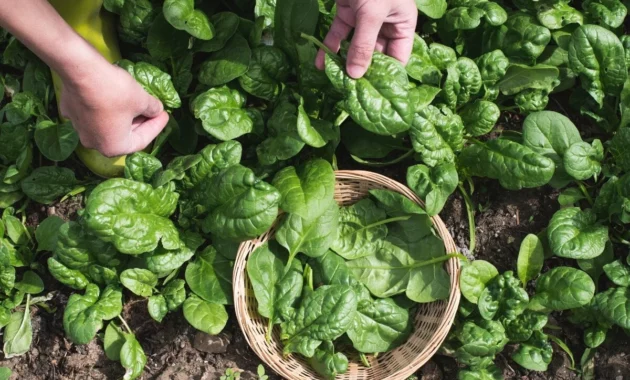
DIY Plant Spinach: A Step-by-Step Guide
Growing spinach at home can be an incredibly rewarding and simple gardening project, whether you have a large garden or just a small space – Choose Good Spinach.
Spinach is a versatile leafy green that grows relatively quickly and can be harvested multiple times throughout its growing season.
It’s rich in nutrients like iron, calcium, and vitamins, making it a healthy addition to your homegrown vegetables. This guide will walk you through the entire process of planting, caring for, and harvesting spinach at home – Choose Good Spinach.
1. Choosing the Right Spinach Variety
Before you start planting, it’s important to choose the right variety of spinach. There are three main types of spinach:
- Savoy Spinach: Known for its dark green, crinkly leaves, this variety is cold-hardy and perfect for fall or early spring planting.
- Flat-Leaf Spinach: This type has smooth, tender leaves, making it easier to clean. It’s the most commonly grown type for commercial production and is great for salads and smoothies.
- Semi-Savoy Spinach: A hybrid between savoy and flat-leaf, semi-savoy varieties have slightly crinkled leaves and are easier to clean than full savoy types.
Consider the climate and growing conditions in your region when selecting the variety, as some types are more heat-tolerant or cold-hardy than others – Choose Good Spinach.
2. Preparing the Planting Area
Spinach grows best in well-drained, nutrient-rich soil with a neutral pH level of about 6.5 to 7.0. It also thrives in cooler temperatures, so aim to plant in early spring or fall when the weather is mild.
Soil Preparation:
- Loosen the Soil: Use a garden fork or spade to loosen the top 6 to 8 inches of soil, ensuring that the spinach roots will have enough room to grow.
- Amend the Soil: Add organic matter like compost or well-rotted manure to enrich the soil. Spinach thrives in nitrogen-rich soil, so adding compost or a nitrogen-heavy fertilizer will give your plants a good start.
- Level the Surface: Once the soil is amended, rake the surface flat to create an even planting area.
Sunlight:
Spinach prefers full sun but will also tolerate partial shade, especially in warmer climates where some shade can prevent bolting (premature flowering).
3. Planting Spinach Seeds
Spinach can be grown from seeds sown directly into the garden or in containers. Follow these steps for a successful planting (Choose Good Spinach):
Sowing Seeds:
- Spacing: Sow the seeds about 1/2 inch deep and 1 to 2 inches apart in rows that are spaced 12 to 18 inches apart. If you’re planting in containers, make sure the container is at least 6 inches deep.
- Watering: After planting, water the soil gently to keep it evenly moist but not waterlogged. Spinach seeds need consistent moisture to germinate, so ensure the soil doesn’t dry out.
- Thinning Seedlings: Once the seedlings are about 2 inches tall, thin them out so that there’s about 3 to 6 inches of space between each plant. This gives the remaining plants room to grow large, healthy leaves.
Germination:
Spinach seeds typically take 7 to 14 days to germinate, depending on soil temperature. Cooler soil temperatures can slow down germination, but the plants will grow more vigorously in cool weather – Choose Good Spinach.
4. Caring for Spinach Plants
Once your spinach seeds have sprouted, the real work begins. Proper care ensures a healthy harvest – Choose Good Spinach.
Watering:
Spinach requires regular watering to keep the soil consistently moist, but not soggy. Aim to water your spinach about 1 inch per week, increasing the amount slightly if the weather is particularly dry. Avoid overhead watering to prevent leaf diseases; instead, water the soil directly around the base of the plants.
Fertilizing:
Spinach is a heavy feeder, meaning it needs a lot of nutrients, especially nitrogen. You can feed your plants with a balanced organic fertilizer every couple of weeks to encourage healthy leaf growth. Alternatively, top-dress the soil with compost to provide a slow-release nutrient boost – Choose Good Spinach.
Mulching:
Applying a layer of mulch around your spinach plants helps retain moisture and keep the soil cool, which is especially important during warmer months.
Organic mulches like straw, grass clippings, or compost also help prevent weed growth and add nutrients to the soil as they decompose – Choose Good Spinach.
5. Managing Pests and Diseases
Spinach is generally a hardy plant, but it can still fall prey to pests and diseases. Common issues include:
- Aphids: These small insects suck the sap from spinach leaves, causing yellowing and distortion. You can remove aphids with a strong spray of water or introduce beneficial insects like ladybugs to control their population.
- Downy Mildew: This fungal disease causes yellow spots on the upper side of the leaves and a gray mold on the underside. To prevent it, ensure good air circulation around the plants, avoid overhead watering, and use disease-resistant varieties.
- Slugs and Snails: These pests can chew holes in spinach leaves. To control them, set up barriers like copper tape or use organic slug pellets around your plants – Choose Good Spinach.
6. Harvesting Spinach
One of the best things about growing spinach is that you can enjoy multiple harvests from the same plant. Spinach can be harvested at different stages, depending on your preference:
- Baby Spinach: For tender baby spinach, start harvesting leaves when they reach about 2 inches long, typically 20 to 30 days after planting. Pinch off the outer leaves, leaving the central growing point intact so the plant can continue producing.
- Mature Spinach: For fully grown spinach, wait until the leaves are 4 to 6 inches long, about 40 to 50 days after planting. You can either cut the whole plant at the base or continue harvesting individual leaves as needed.
Spinach is best when harvested in the early morning before the sun is too hot, as this helps retain its crispness and flavor – Choose Good Spinach.
7. Storing Spinach
After harvesting, spinach can be stored in the refrigerator for up to a week. To keep it fresh, place the leaves in a damp paper towel and store them in a plastic bag or airtight container – Choose Good Spinach.
For longer storage, spinach can be blanched and frozen for several months, making it a convenient addition to soups, smoothies, and cooked dishes.
Conclusion
Growing your own spinach is an easy and rewarding way to enjoy fresh, nutrient-dense greens at home.
By choosing the right variety, preparing the soil, and following proper planting and care techniques, you can enjoy a continuous harvest of spinach throughout the growing season – Choose Good Spinach.
Plus, having fresh spinach just a few steps away makes it easier to incorporate more healthy greens into your diet.
